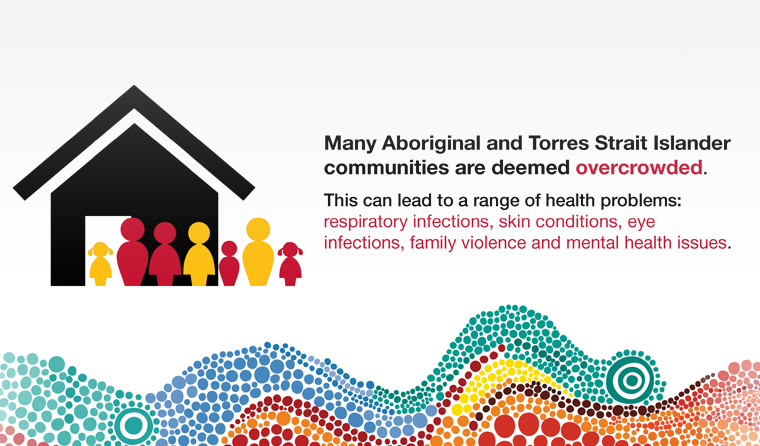Feature
Overcrowding leads to poorer health outcomes for Aboriginal and Torres Strait Islander peoples
In the first of a series focusing on the coming third edition of the ‘National guide to a preventive health assessment for Aboriginal and Torres Strait Islander people’, newsGP examines the effects of overcrowding on health outcomes.
 Overcrowding can also result in environmental stressors, such as from a lack of privacy, which can have an impact on mental health.
Overcrowding can also result in environmental stressors, such as from a lack of privacy, which can have an impact on mental health.
Many households in Aboriginal and Torres Strait Islander communities are deemed overcrowded, a situation that can lead to a wide range of health problems.
The National Aboriginal Community Controlled Health Organisation (NACCHO) and the RACGP’s National guide to a preventive health assessment for Aboriginal and Torres Strait Islander people (the National Guide) and the Centre for Aboriginal Economic Policy Research’s working paper, The scale and composition of Indigenous housing need, define overcrowded households as those that do not meet the following requirements:
- No more than two persons per bedroom
- Children aged <5 years of different sexes may reasonably share a bedroom
- Children aged ≥5 years of opposite sex should have separate bedrooms
- Children aged <18 years and the same sex may reasonably share a bedroom
- Single household members aged >18 years should have a separate bedroom, as should parents or couples
The National Guide reveals that Aboriginal and Torres Strait Islander families living in overcrowded circumstances are more susceptible to contracting infections through lack of hygiene from poor sanitation and close contact with others.
For example, situations in which several people are sharing a single bathroom, and the bore water supply (on which many remote Aboriginal and Torres Strait Islander communities depend) struggles to maintain appropriate levels, result in inadequate fresh water for basic cleaning. Another example is the ease with which an infection can spread via bed linen when several children are sharing a bedroom.
Chronic ear infections (eg otitis media), eye infections (eg trachoma), skin conditions (eg crusted scabies), gastroenteritis, respiratory infections (overcrowding
has been identified as a risk factor for pneumococcal disease), and exacerbation of family violence and mental health issues are all potential outcomes from overcrowded environments.
In remote areas, overcrowded households (more than two children aged <5 years) are associated with a
2.4-fold increased risk of the youngest child having otitis media. According to the
Systematic review of existing evidence and primary care guidelines on the management of otitis media in Aboriginal and Torres Strait Islander populations, these high rates of infection could be prevented if overcrowding in Aboriginal communities was improved.
Overcrowding can also present as an environmental stressor for people living in such households, including from issues such as a lack of privacy, which can have an impact on mental health.
Research from the Australian Bureau of Statistics shows that 14% of Aboriginal and Torres Strait Islander people in remote areas cited overcrowding at home as this type of stressor, compared to 9% of those living in non-remote areas.
In addition, the
Y health – Staying deadly: An Aboriginal youth focussed translational action research project addresses overcrowding as a potential factor when exploring issues of Aboriginal youth mental health.
However, other significant factors to recognise are that some houses need to accommodate for overcrowding due to extended family visits to deal with illness, mourning a death in the family, or sometimes for cultural reasons.
Various government strategies are in place to combat the negative impacts of overcrowding, including the
National partnership agreement on remote Indigenous housing, funded by the Federal Government. This policy aims to assess the current state of poor housing conditions in Aboriginal and Torres Strait Islander communities, as well as issues of housing shortage and homelessness.
These strategies are working towards improving housing conditions in rural and remote areas, a key part in helping to close the gap between Aboriginal and Torres Strait Islander peoples and non-Indigenous Australians.
NACCHO and the RACGP’s
National guide to a preventive health assessment for Aboriginal and Torres Strait Islander people, provides further information on overcrowding in the following chapters:
- Hearing loss
- Eye health
- Respiratory health – Pneumococcal disease prevention
- Mental health
- The health of young people
Aboriginal-and-Torres-Strait-Islander-health national-guide overcrowding
newsGP weekly poll
Which of the following areas are you more likely to discuss during a routine consultation?